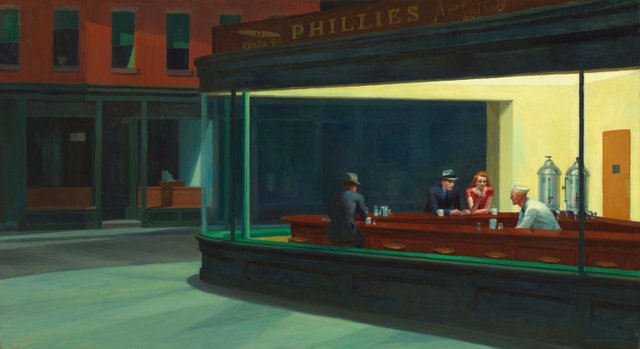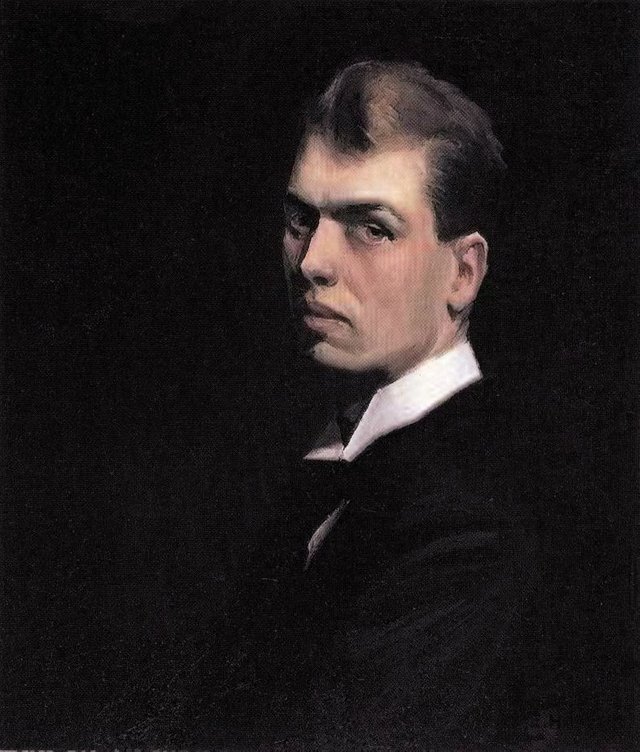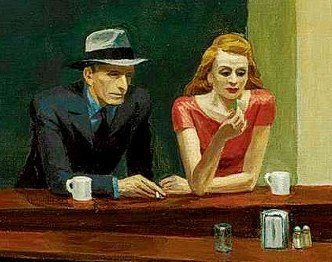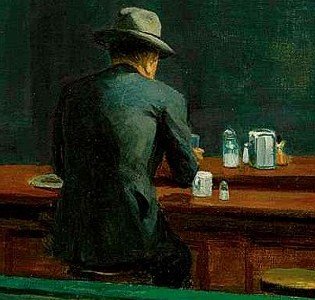The best representation of the loneliness of modern man. Analysis of Edward Hopper's "Nighthawks"
| Author | Edward Hopper |
|---|---|
| Year | 1942 |
| Technique | Oil on canvas |
| Style | Realism |
| Dimensions | 33.1 in × 60 in |
| Location | Art Institute of Chicago, United States |

Context
"Nighthawks" is a painting that was made by the American painter Edward Hopper in 1942, it shows four people in a diner (very common small restaurants in the northeast of United States ) that was located in Greenwich Village, his hometown in Manhattan. This painting, besides being Hopper's most famous work, is one of the most recognized works of American and contemporary art, its influence on modern culture is unparalleled.
The title of the work is metaphorical because there are no hawks in the painting, the Nighthawks are actually people who are awake overnight and wander around the city.
In 1942 there are two very important facts we should highlight on American society, the first is the recovering from the Great Depression and the second is that a few months ago the Japanese Empire had attacked the naval base of Pearl Harbor in the Pacific added to that four days later Hitler would declare war on the United States. Isolationism was supported by the majority, people did not want the problems of Europe and Asia to affect them, since their lives began to improve after a complicated years.

With few visual elements, Hopper has shown us a typical vision of modern urban life where a feeling of loneliness predominates, a recurring theme in his works.
Analysis
The scene that Hopper shows disturbs and disturbs us. It is at night, or maybe at midnight, an hour that does not invite great things to happen. The intense lighting of the room is projected on the sidewalk of a lonely street and in part of the facade of the only building that we see in the background where there is a cash register.
Inside the diner the three clients remain seated, without speaking or looking at another person. The two most distant from the viewer are a couple, and there is a third one sitting on his back. The bartender at the bar is busy doing some manual work, but at the same time he is looking outside the bar.
The couple attracts our attention at first sight since they are in the most illuminated area of the scene. Their proximity and the closeness of his hands, makes us believe that they are a couple or that there is a strong connection between them. However, they do not pay attention to each other, the man looks at the bar and the woman focuses her gaze on a small object held in her hand, despite being together they are alone.

Source
The two male characters wear dark suits of jacket and remain with their hats on, the woman is wearing a red dress. The position of the solitary man who turns his back on us reflects a very large self-absorption, another type of loneliness different from the one of the couple.
If we look closely, we can see that there is no way out of the bar; this forms a triangle that traps the waiter, which reinforces the idea of being locked up. Hopper later denied having tried to communicate that in the painting, but admitted that:
Unconsciously, probably, I was painting the loneliness of a big city.
Hopper does not tell us the night but the sensation that it produces. He is not interested in movement but in pause. That is why it always presents us with the scenario where something happened or is about to happen. What I want to express always goes beyond the image, that's why the moments of isolation and intimacy focused on the plasma.
The painting leaves many questions open since it does not seem to have a specific defined theme, it invites the observer to release his imagination. If something is sure is that the action is not the protagonist since nothing is happening, but instead if we appreciate the loneliness of the human being, reflected in each character abstracted in their thoughts and feelings regardless of whether they are accompanied by others physically .
Technique
The colors that Hopper used are little varied and without great tonality, although they are very saturated, which increases the strange sensations of the picture.
One of the tricks that allows to transmit that feeling of loneliness is found in the large windows and counters of the street. In none of them are figures, except a cash register, which appears on the isolated background and in the shade, in the middle of a store that seems to be empty.
Something very interesting happens with the character on his back, this is at the center of the composition, but it creates an interesting contradiction, despite being the central figure, due to the lighting and the color of his clothes (similar to the background does that we do not pay much attention to him.

Source
Surprising mastery of the painter, who with so few visual elements was able to create one of the best allegations made in modern painting on the subject of the loneliness of contemporary man.
Curiosities
The couple's noses look like peaks, maybe this is a reference to the title.
Hopper's work had a significant influence on the cinematography of the 20th century. There are references to his works in films such as: Scarface (Howard Hawks, 1932), and Blue Velvet (David Lynch, 1986), Psycho (Alfred Hitchcock, 1960) and Money dropped from the sky (Herbert Ross, 1981).
Images extracted from Wikipedia.org
I like your post because your post quality is very good and nice so thank you for shearing this post
Your Post Has Been Featured on @Resteemable!
Feature any Steemit post using resteemit.com!
How It Works:
1. Take Any Steemit URL
2. Erase
https://3. Type
reGet Featured Instantly & Featured Posts are voted every 2.4hrs
Join the Curation Team Here | Vote Resteemable for Witness
The minimum amount to use our service is 0.12 or 0.121 (incognito) We have honored your payment for this post but please submit the correct amount from now on. You can always find the current minimum in our profile headline.
Hermoso post, @alejandromata. Hooper es uno de mis pintores favoritos. Su pintura siempre dice más cosas que las que muestra en el cuadro.
Su influencia es detectable también en la literatura.
Saludos.